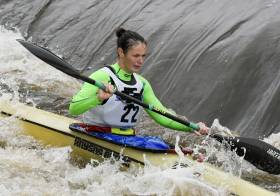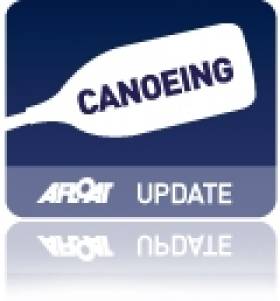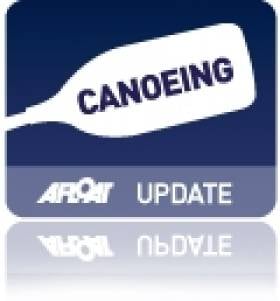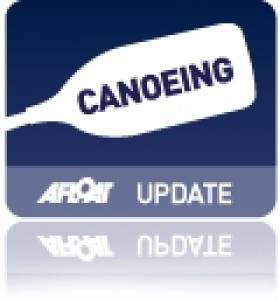Displaying items by tag: marathon
Jenny Egan Takes Silver in China World Cup
#Canoeing: Jenny Egan took a silver medal at the ICF Marathon World Cup in Shaoxing, China. Anna Adamova Koziskova of the Czech Republic won a sprint finish with the Ireland athlete at the end of the 26.2 kilometre race. Lizzie Broughton of Britain was third.
This World Cup is new on the international circuit and while the top marathon canoeists have been invited, not all have travelled. Unusually for this discipline, there has been prize money for competitors.
Jenny Egan Takes Bronze Medal at World Marathon Championships
#Canoeing: Ireland’s Jenny Egan took a bronze medal in the K1 at the Canoe Marathon World Championships in Pietermaritzburg in South Africa. Lani Belcher, who competes for Britain, took gold at the head of a group of three which broke away from the rest of the field. Vanda Kiszli of Hungary took silver.
Egan’s World Championship medal capped a season in which she won gold and bronze in the K1 5,000 at canoe sprint World Cup events.
Rónán Ó Foghladha took fifth in the men’s junior K1.
Canoe Marathon World Championships, Pietermaritzburg, South Africa (Irish interest)
Men - K1: 19 B Watkins 2:15.26; 24 P Egan 2:19.07. Junior: 5 R Foley 1:45.48.
Women – K1: 1 Britain (L Belcher) 2 hrs 5 min 04 seconds, 2 Hungary (V Kiszli) 2:05.10, 3 Ireland (J Egan) 2:05.39; 17 A Smith 2:17.20
Ireland Canoeists Lose Time on Portages at World Championships
#CanoeMarathon2013: Ireland’s Jenny Egan and Peter Egan finished 15th and 19th respectively at the Canoe Marathon World Championships at Lake Bagsværd, Denmark, today. Jenny Egan started promisingly but was knocked back by her performances on the portages.
Peter Egan was generally faster on his portages on his paddle, but did lose control of his boat on one and lost time.
Last year, in Rome, Peter Egan finished 17th and Jenny Egan 16th.
Canoe Marathon World Championships, Lake Bagsværd, Denmark (Irish Interest, Selected Results)
Men, K1 (30.1 km): 1 H McGregor (South Africa) 2 hourse 10 mins 34 seconds; 19 P Egan (Ireland) 2:15.26.
Women, K (25.8 km) 1: R Csay (Hungary) 2:01.26; 15 J Egan (Ireland) 2:09.23.
Canoeist Banks Comes Close in Copenhagen
#CanoeMarathon2013: Malcolm Banks of Salmon Leap Canoe Club finished fifth in the K1 50 to 54 class at the Canoe Marathon Masters World Cup in Copenhagen in Denmark today. The Irishman got away with the leading group and was just 28 seconds off a medal at the finish. Banks was a Masters world champion in 2008.
Ireland Junior Canoeists Get First Taste of World Championships Fare
# CANOEING: Ireland’s three junior competitors all completed the testing course on the river Tiber in Rome at the Canoe Marathon World Championships today. Sean McCarthy took 22nd place in the junior K1, and Mark Hartnett 32nd. Cait Broderick took 21st in the women’s event.
Ireland’s senior competitors, Jenny and Peter Egan, will compete tomorrow.
In the Masters events, which preceded the World Championships, Malcolm Banks finished fourth and Deaglan O Drisceoil fifth.
Canoe Marathon World Championships – Day One (Irish interest)
Men, Junior K1: 1 Hungary (A Petro) 1:33:52.350; 22 S McCarthy 1:42.35.870; 32 M Hartnett 1:50:08.080
Women, Junior K1: 1 Hungary (T Takacs) 1:23.42.420; 21 C Broderick 1:36:34.930.
Irish Contingent in Singapore for Canoe Marathon Worlds
An Irish contingent is in Singapore this weekend to compete at the 19th ICF Canoe Marathon World Championships.
In the women's K1, Jenny Egan - the Irish Times/Irish Sports Council Sportswoman of the Month in June this year - was set to face six laps of the 4.2km course with six portages in the women's K1.
Meanwhile, her brother Peter Egan - teaming today with Neil Fleming in men's K2 - is scheduled to face seven laps with seven portages.
Fleming and Richard Hendron were also set to take on the same course in the men's K1.
Live streaming of the weekend's competition, which concludes this evening, is available HERE.

































































